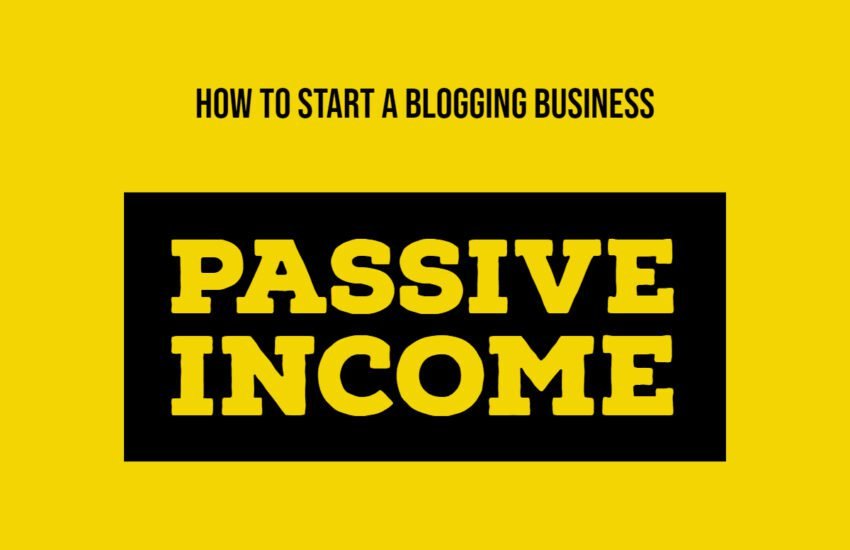How to Use Google My Business to Boost Your Blog Ranking
When it comes to improving the visibility and ranking of your blog in search engine results, there are numerous factors to consider. One often overlooked but highly valuable tool is Google My Business. In this article, we will explore how you can utilize Google My Business to enhance your blog’s SEO and increase its online presence.
- What is Google My Business?
- Claim and Optimize Your Google My Business Listing
- Utilize Google My Business Posts
- Collect and Respond to Reviews
- Showcase Your Blog’s Attributes
- Monitor Insights and Analytics
- Conclusion
- Frequently Asked Questions
- 1. What is Google My Business (GMB), and why is it important for blog ranking?
- 2. How do I set up a Google My Business listing for my blog?
- 3. Can I use Google My Business if I don’t have a physical location for my blog?
- 4. How can I optimize my Google My Business listing to improve my blog’s ranking?
- 5. Does Google My Business help with local SEO for my blog?
- 6. How can I track the performance of my Google My Business listing for my blog?
- 7. Can I link my blog posts to my Google My Business listing?
- 8. How quickly can I expect to see results from using Google My Business for my blog?
- 9. Is it necessary to regularly update my Google My Business listing for my blog?
- 10. Are there any pitfalls to avoid when using Google My Business for my blog?
What is Google My Business?
Google My Business is a free online platform provided by Google that allows businesses and website owners to manage their online presence. It provides a range of features that can help you optimize your blog for local search and improve its visibility in Google’s search results.
Claim and Optimize Your Google My Business Listing
The first step to using Google My Business effectively is to claim and verify your listing. This involves providing accurate information about your blog, such as its name, address, phone number, and website URL. Ensure that all the information you provide is consistent with your blog’s branding and other online profiles.
Once you have claimed your listing, it’s essential to optimize it for maximum visibility. Add relevant categories, a detailed description of your blog, and high-quality images that showcase your brand. The more information you provide, the better Google can understand and rank your blog.
Utilize Google My Business Posts
Google My Business allows you to create posts that appear alongside your listing in search results. These posts can include updates, promotions, events, or any other relevant information about your blog. By regularly posting engaging content, you can attract more visitors to your blog and improve its visibility.
Make sure to optimize your posts with relevant keywords and include a compelling call-to-action to encourage users to click through to your blog. Additionally, consider using eye-catching visuals to make your posts stand out in the search results.
Collect and Respond to Reviews
Reviews play a crucial role in building trust and credibility for your blog. Encourage your readers and visitors to leave reviews on your Google My Business listing. Positive reviews can help attract more users to your blog and improve its ranking in search results.
It’s important to actively monitor and respond to reviews, both positive and negative. Engaging with your audience shows that you value their feedback and are committed to providing a positive experience. Addressing negative reviews in a professional and helpful manner can also help mitigate any potential damage to your blog’s reputation.
Showcase Your Blog’s Attributes
Google My Business allows you to highlight specific attributes of your blog, such as whether it is women-led, LGBTQ+ friendly, or offers free Wi-Fi. These attributes can help your blog stand out from the competition and attract a more diverse audience.
Ensure that you accurately showcase your blog’s unique features by selecting the relevant attributes in your Google My Business profile. This can help potential visitors make informed decisions and increase the chances of them choosing your blog over others in search results.
Monitor Insights and Analytics
Google My Business provides valuable insights and analytics about your listing’s performance. Take advantage of this data to understand how users are finding and interacting with your blog. Monitor metrics such as views, clicks, and calls to gain insights into your blog’s visibility and user engagement.
Use this information to refine your SEO strategy and make data-driven decisions to improve your blog’s ranking. Experiment with different types of posts, keywords, and visuals to see what resonates best with your audience.
Conclusion
Google My Business is a powerful tool that can significantly impact the visibility and ranking of your blog in search results. By claiming and optimizing your listing, utilizing posts, collecting and responding to reviews, showcasing your blog’s attributes, and monitoring insights, you can leverage Google My Business to enhance your blog’s SEO and attract more visitors. Incorporate these strategies into your SEO efforts in 2024, and watch your blog’s ranking soar.
Frequently Asked Questions
1. What is Google My Business (GMB), and why is it important for blog ranking?
Google My Business (GMB) is a free tool provided by Google that allows businesses and individuals to manage their online presence across Google’s various platforms, including Google Search and Google Maps. For bloggers, having a GMB listing can significantly boost their visibility in local search results, thereby increasing traffic to their blog. When users search for relevant topics or services in their area, Google often displays GMB listings prominently, making it a powerful tool for increasing blog exposure.
2. How do I set up a Google My Business listing for my blog?
Setting up a Google My Business listing for your blog is a straightforward process. First, go to the Google My Business website and sign in with your Google account. Then, follow the prompts to enter your blog’s name, address (if applicable), phone number, website URL, and category. Once you’ve entered this information, Google will either verify your listing instantly or send you a postcard with a verification code to confirm your address.
3. Can I use Google My Business if I don’t have a physical location for my blog?
Yes, you can still use Google My Business for your blog even if you don’t have a physical location. During the setup process, you’ll have the option to select a service-area business, which allows you to specify the geographic areas you serve without displaying your precise address. This is ideal for bloggers who operate online and don’t have a physical storefront.
4. How can I optimize my Google My Business listing to improve my blog’s ranking?
To optimize your Google My Business listing for better blog ranking, make sure to:
– Provide accurate and detailed information about your blog.
– Use relevant keywords in your business description and blog posts.
– Upload high-quality images related to your blog.
– Encourage satisfied readers to leave positive reviews.
– Regularly update your listing with fresh content or blog posts.
By following these optimization techniques, you can improve your blog’s visibility in Google’s search results.
5. Does Google My Business help with local SEO for my blog?
Yes, Google My Business is a powerful tool for local SEO (Search Engine Optimization) for your blog. By optimizing your GMB listing and regularly updating it with relevant information, you can improve your blog’s visibility in local search results. This is particularly beneficial if your blog caters to a specific geographic area or if you offer services to local readers.
6. How can I track the performance of my Google My Business listing for my blog?
Google provides insights and analytics tools within the Google My Business dashboard, allowing you to track the performance of your listing. You can see metrics such as the number of views, clicks, and actions taken on your listing, as well as the number of calls and website visits generated. By monitoring these metrics, you can identify areas for improvement and refine your strategy to better reach your target audience.
7. Can I link my blog posts to my Google My Business listing?
While Google My Business doesn’t directly support linking individual blog posts, you can still leverage your listing to drive traffic to your blog. Use the “Posts” feature within GMB to share updates, promotions, or announcements related to your blog. Include a call-to-action encouraging users to visit your website to read the full blog post. This indirect approach can help funnel interested readers from your GMB listing to your blog.
8. How quickly can I expect to see results from using Google My Business for my blog?
The timeline for seeing results from using Google My Business for your blog can vary depending on factors such as your niche, competition, and the effort you put into optimizing your listing. Generally, you may start to see improvements in your blog’s visibility within a few weeks to a few months after setting up and optimizing your GMB listing. Consistency and ongoing optimization are key to maximizing the benefits of GMB for your blog’s ranking.
9. Is it necessary to regularly update my Google My Business listing for my blog?
Yes, it’s essential to regularly update your Google My Business listing for your blog to keep information accurate and engage with your audience effectively. Regular updates signal to Google that your listing is active and relevant, which can positively impact your blog’s ranking in search results. Additionally, updating your listing with fresh content or blog posts can attract more readers and encourage user interaction, such as clicks and reviews.
10. Are there any pitfalls to avoid when using Google My Business for my blog?
While Google My Business can be a valuable tool for blog ranking, there are some pitfalls to avoid:
– Providing inaccurate or incomplete information: Ensure all details in your GMB listing are accurate and up-to-date.
– Neglecting customer reviews: Actively monitor and respond to reviews to maintain a positive online reputation.
– Ignoring insights: Regularly review performance metrics to identify areas for improvement.
– Violating Google’s guidelines: Familiarize yourself with Google’s guidelines to avoid penalties that could harm your blog’s ranking.
By avoiding these pitfalls and following best practices, you can effectively leverage Google My Business to boost your blog’s ranking.


